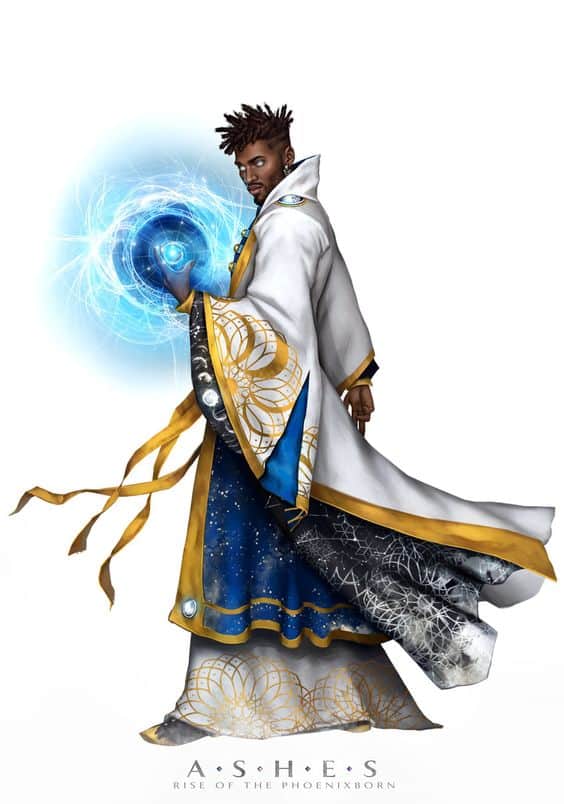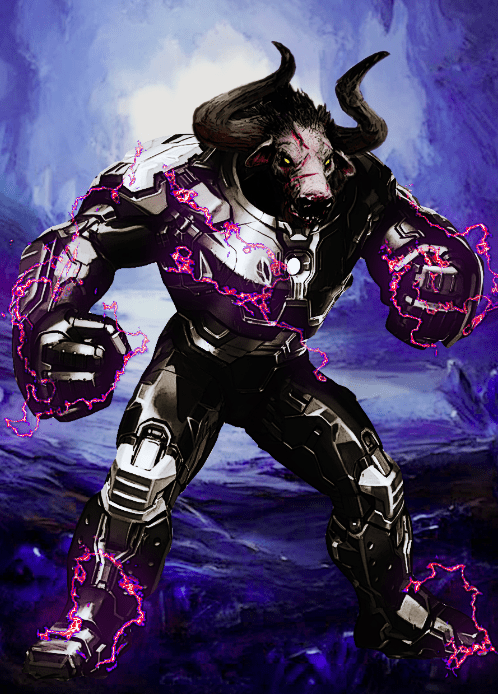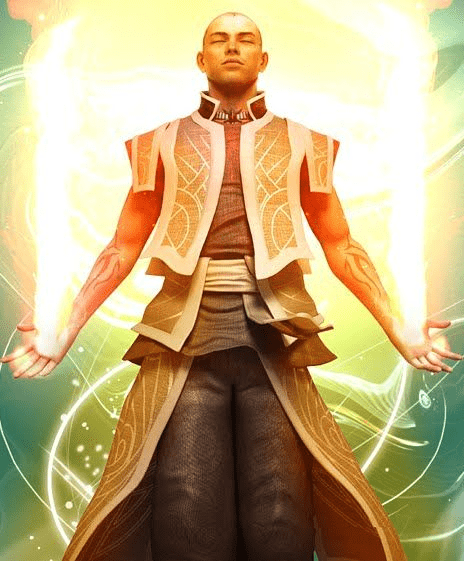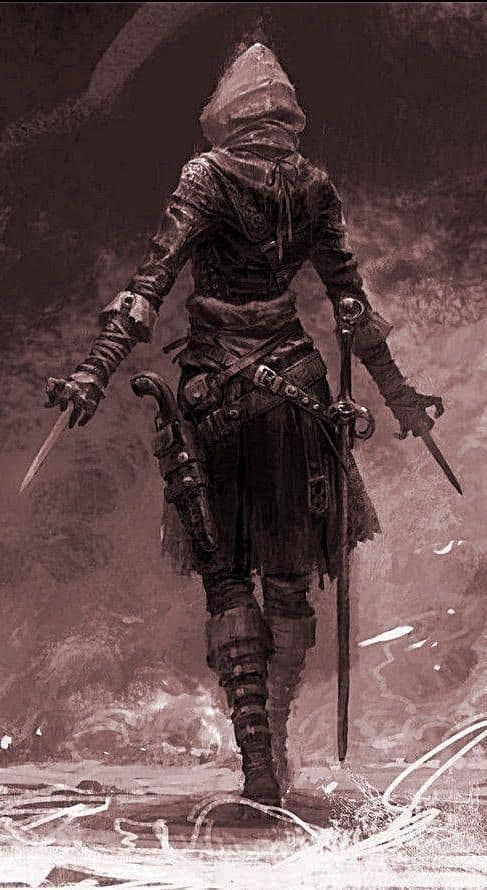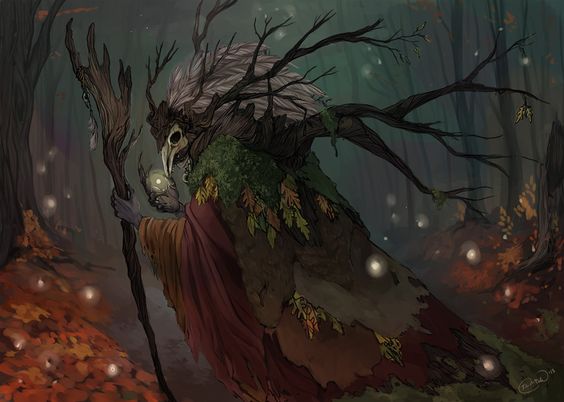D&D 5e: Circle of Wildfire Druid Guide
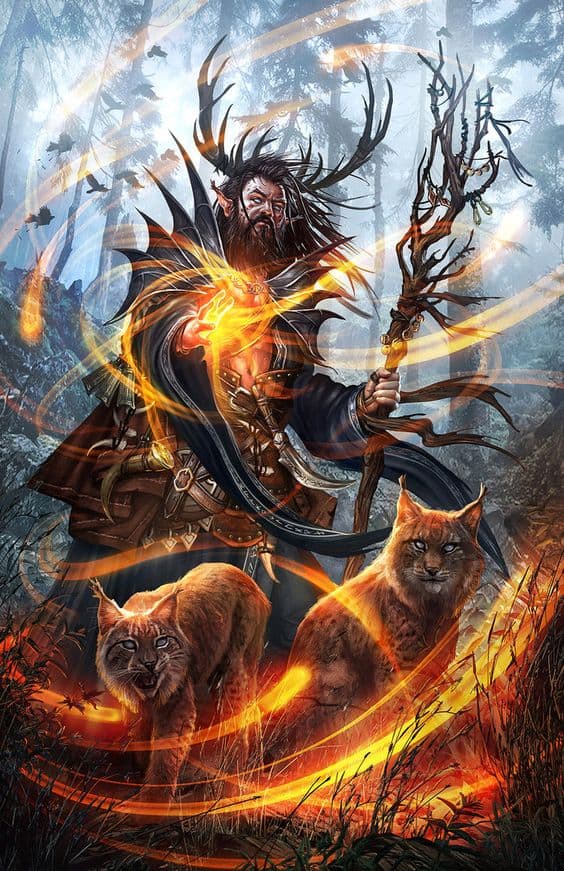
D&D 5e: Circle of Wildfire Druid Guide
Role in the Party
The Druid is mostly known for preserving nature, seeking to keep balance in all things, guarding the green and pleasant places, and turning into a bear to hibernate away the winters.
But Druids who follow the Circle of Wildfire understand that sometimes, for new life to bloom, everything has to be burned to the ground first.
Whether doing it themselves by calling forth waves of elemental fire to scour sacred lands free of corruption, summoning elemental spirits to fight on their behalf, or tending to the wounds of their allies as the ashes cool, Druids of this Circle can be terrifying to face as they burn everything around them with wild abandon.
This guide breaks down the strengths of the subclass, including potential feats, skills, and builds. Let’s dig in.
Epic
Good
Meh
Bad
The Circle of Wildfire Druid subclass is found in Tasha’s Cauldron of Everything. Click here to pick up your own copy of Tasha’s Cauldron of Everything!
Circle of Wildfire Features
Circle Spells: The Druid of Wildfire learns the spells below at the stated levels. These spells are always prepared and don’t count against the Druid’s spells known.
This is a decent list, with some solid damaging spells and a few healing options as well as a revive, which reduces the ‘healing tax’ on the Druid’s spells known if they’re taking the role of main or secondary healer.
2nd:
Burning Hands: Good damage at low levels in a decently sized and easy to target AOE. Terrible scaling, but this is a good start to the list.
Cure Wounds: Having a healing spell on hand for emergencies is essential. A lot of Druids were probably going to take this anyway, so getting it for free is nice.
3rd:
Flaming Sphere: A nice spell that combines damage over multiple turns with some AOE movement deterrence (most enemies don’t want to stand next to the giant burning fireball) but it does eat your bonus action to move, so doesn’t work alongside the Wildfire Spirit. (More on this later.)
Scorching Ray: Decent damage, but requires a lot of attack rolls. If the Druid can find a way to gain Advantage against its target, this can really hurt.
5th:
Plant Growth: Weird and situational. The out-of-combat benefits are nice, and the in-combat debuff can be absolutely debilitating if you find the right terrain, but it does almost nothing for encounters in towns, dungeons, etc…
Revivify: Someone needs to be able to revive the party, and having a backup is never a bad thing. This is a great spell to always have prepared.
7th:
Aura of Life: Situational, but resistance to Necrotic damage and free healing to 1HP when downed can be useful to have on offer if the zombies come crawling.
Fire Shield: This is a good spell, but the Circle of Wildfire is a caster, not a brawler. You shouldn’t be getting hit enough to trigger this reliably, and if you are, you might just be playing the character wrong.
9th:
Flame Strike: A decent AOE and reasonable damage, split between two damage types to help with the resistance.
Mass Cure Wounds: This is a reasonable heal on a solid number of targets, and well worth casting.
Summon Wildfire Spirit: The core ability of the subclass, summoning a Wildfire Spirit (referred to generally just as the ‘Spirit’ in this guide,) is available from level 2, when the Druid chooses to join the Circle of Wildfire.
The ability costs Wild Shape charges, meaning that the Druid can summon their Spirit twice per day without rests. But charges fully refresh on short rests, meaning that four or more daily uses of this aren’t out of the question.
The ability is complicated, so we’ve broken down some of the most important things to know into a bulleted list.
-
The Spirit is primarily a ranged attacker, hitting based on the Druid’s spell attack bonus, and dealing damage scaling on proficiency. Damage is very good at low levels, becoming less relevant at higher levels. (Though the Spirit also offers more utility by then.)
-
It’s surprisingly squishy. Once the class gains some levels, the HP pool of the Spirit is decent, but a non-scaling AC of 13 means it’s very easy to hit.
-
It can fly, including hovering, and can be summoned in a space of your choice. Avoid melee by flying over your enemy’s heads.
-
Summoning takes a bonus action and deals a small amount of damage to enemies within 10ft in the turn it is summoned.
-
It takes a bonus action every turn to cause the Spirit to take its own actions. The Spirit can throw a bolt of fire up to 60ft, or teleport itself and willing creatures within 5ft up to 15ft away. (Useful to get itself or allies out of threatening situations.)
-
The Spirit is summoned for an hour, and the Druid can only have one at once. (An existing Spirit instantly disappears if another is summoned.)
-
The Spirit is completely immune to fire. That means it can sit inside the Druid’s AOE fire blasts entirely without fear. It’s also immune to a solid list of other conditions.
What this translates to is a summon that mostly just deals damage, but can also provide utility in the form of space blocking and teleportation. Considering just how many times the Druid can summon these things every single day, and how little actual resource cost there is, the Wildfire Spirit summon is a very powerful ability that’s going to be core to what this subclass wants to do.
Enhanced Bond: At level 6, having the Fire Spirit active boosts the Druid’s spells. Whenever the Wildfire Druid casts a spell that deals fire damage or heals HP while the Spirit is summoned, the Druid can roll another d8 and add it to one of the rolls.
This is really good. Spellcasting classes generally get a similar boost at around level 8, so getting it two levels early is lovely. Equivalent abilities are normally keyed to casting stat bonus, which will hover around 4-5, which is mathematically roughly the same as the average roll on a d8 (4.5.)
It’s also nice to get a bonus to healing, and the conditional effect of only occurring when the Wildfire Spirit is summoned isn’t a problem, because realistically, whenever you drop big combat spells, it should be.
As a last bonus, the Druid can cast their spells using the Spirit as the point of origin, another great bonus as it lets them cast spells that might otherwise put them in danger, or drop a heal from the Spirit if they can’t quite make it to an ally.
All in all, this is a really good ability.
Cauterizing Flames: From 10th level, creatures dying within 30ft of the Druid or its Spirit, leave a spectral flame, a fragment of elemental energy, in its space.
If a creature moves through the space, the Druid can spend their reaction to either deal 2d10+WIS fire damage or heal 2d10+WIS HP to the creature that triggered the reaction.
The ability scales with proficiency and comes back on a long rest, which translates to 4 to 6 daily uses. That’s not a lot, and at this level, the damage probably isn’t worth the reaction.
But at the level this comes in, it heals more per day on average than the Paladin’s Lay on Hands and costs no resources besides a reaction. So as an easy way to gain some free mid-combat healing, or for the party to spend a round or two hoovering up the soul fragments after combat is done, the ability is incredibly worthwhile.
Blazing Revival: From level 14, the Wildfire Druid can call upon the power of their elemental Spirit, and adamantly refuse to die.
When reduced to 0HP, if the Spirit is within 120ft, (which is going to be almost always) they can dismiss the Spirit to instantly stand up and regain half their total HP.
This is nuts. The ability can only be used once per day, but the Druid of Wildfire is a spellcaster, so should be in the back and safely out of threat range a lot of the time. This gives the Druid an incredibly powerful emergency button, and there’s literally nothing stopping the character from just resummoning the Spirit next turn if they have the uses left.
Strengths
The most obvious strength of the Wildfire Druid is blasting. Its unique spell list has a number of strong AOE blasts that the Druid class doesn’t generally have access to. Pairing that with its damage bonus that’s available at a very low level, the Wildfire Druid can easily deal as much damage in combat as its name would suggest.
The Wildfire Spirit ability is another solid boon. At low levels, it does almost as much damage as another full party member, and while that damage does fall off in later levels, having another ball of HP in the fight that can also emergency action teleport an ally to safety is never a bad thing.
But fire doesn’t just destroy. In the wake of a forest fire comes new life, dead wood and stifling weeds burned away and soil refreshed and full of new vitality. In the same way, the Circle of Wildfire isn’t just a force of destruction. It’s also a surprisingly powerful healer, with some very effective HP restoring spells and the especially important Revivify in its Circle spells list, and bonuses to healing in its subclass abilities.
At later levels, the subclass also gets deceptively tanky, spreading around bonus free healing simply for killing things, which it already wants to do, and literally cheating death once per day as a capstone.
All of this comes together to make an effective caster that has the spells to effectively take on multiple roles. Dealing damage, buffing and healing the party, and debuffing and controlling the battlefield, the Wildfire does it all.
Weaknesses
Despite being touted as a blast mage, the Wildfire Druid has a few issues in the role. First is the fact that its spell list, despite being pretty damn good, is missing some key fire spells, specifically Fireball, which is a big omission.
Second, enemies that are resistant to fire are a problem, and enemies that are flat-out immune to fire are a bigger one. There are ways around resistance, but the character has to pay opportunity costs for them in the form of feats, and there just might not be space in the build in the early levels. Fighting multiple elementals or fiendish monsters can be exhausting for Druids of these Circles because they might not have the tools to deal with them.
But the biggest problem with the class is how many of its abilities are keyed into the Wildfire Spirit ability, including the bonus damage and healing from Enhanced Bond, and the revival of Cauterizing Flames.
Both of these are big boosts to the class, and just not being able to use them because something decided to target your Spirit, which can be surprisingly trivial to take out, or the Druid not having any summons left, is a major problem. It’s important for the Circle of Wildfire, more than most casters, to work alongside their party and make sure that short rests are available to keep their resources up whenever necessary.
Best Race Options
Protector Aasimar: Decent stats, more free healing, resistance to two damage types, a cantrip, Darkvision, and once per day the ability to sprout wings and blast holes in your enemies with even more radiant damage. Fitting the theme and great abilities is a 10/10 race from me.
Owlin: The Wildfire Druid wants to hang back and cast spells while accompanied by its Spirit. Permanent flight that’s only limited by heavier armors the subclass doesn’t need to wear is one of the easiest ways to do that without reprisal, especially at low levels where most enemies just have no answer. Darkvision and Stealth proficiency are also great bonuses to have, too.
Tortle: Good stats, natural weapons, the ability to hold breath for an hour (hey, it might come in handy!) Survival proficiency is a good skill for Druids. But the biggest thing is the Tortle shell. Flat 17 AC is better than what most Wildfire Druids will have, and the ability to retreat into its shell is a decent emergency defense that could tie into Blazing Revival.
Plus, the image of a crotchety old turtle shuffling around incinerating everything that moves is just funny.
Choosing the Right Skills
The Druid as a class has low skill availability, with many subclasses only having 4 skill proficiencies total over their adventuring career. That means picking skills that maximize efficiency is important. Luckily, the Druid’s skill choices and stats lend themselves toward some vital choices.
Perception is on the list and is probably the most rolled skill in the entire game. Insight is a vital social skill and one that the Druid is good at. Survival is on the theme for the Druid class and helps the party when they’re out in the wilds.
With their last skill slot or two, the Druid might consider picking up a knowledge skill for the party, for example, Arcana or Nature.
Fitting Feats
Elemental Adept: You’re a Druid of fire. Fire is the most resisted damage type in the game. Take this feat, and ignore enemy resistance. Also, deal more damage. Everybody wins! (Except for the poor people who get burned to a crisp…)
Metamagic Adept: The Druid has some great candidate spells that pair with metamagic. Options include Extended and Twinned defensive buffs, Extended spell can double the duration on buffs and summons, and Subtle spells can help during social situations or when restrained.
Finally, Transmuted Spell allows the Druid to shift their elemental spells to a different type of damage, which is a major help in the times that the party runs into something with protection against fire damage.
Fey Touched: The Wildfire Druid is a relatively squishy caster that nevertheless wants to get close to its enemies for maximum effect on a lot of spells. An emergency bonus action teleport to get out of threat range is a big help, and it’s a spell the Druid doesn’t generally have access to.
Optimal Backgrounds
Acolyte: Two good skills and twin languages help the Druid fulfill a more social role in the party, and this fits the background perfectly.
Outlander: Physical, outdoorsy skills that fit the theme, a language, and a musical instrument of some description all add to the mystique of the fire obsessed, ritualistic madman.
Sailor: Two great skills, including the vital Perception skill, plus proficiency in the necessary skills to take to the seas. Great flavor, and might just be essential in some campaigns.
Multiclassing Options
The Wildfire Druid is a difficult class to multiclass with. As a primary spellcaster, taking levels in martial classes affects spell progression, and every non-Druid level taken in the build weakens the class effects, especially its key abilities like the Wildfire Spirit. If you are multiclassing, 1 or 2 level dips are generally best.
Peace Cleric: We’re here for a one level dip and one ability. Emboldening Bond. This is a scaling buff that significantly increases the power of multiple party members, can be used out of combat so it doesn’t eat into action economy, and scales with total character level, not class level.
Proficiency in another skill for free and access to the Cleric’s spell list, including standouts like Bless, are also nice bonuses to add to the build.
Genie Warlock: Needing high charisma is rough, but gaining a bonus to spell damage for Fire spells that scales with proficiency is worth a one level dip. The second level 1 ability, the Genie’s vessel, is nice to have too, though most of its power comes later.
The build also gains access to the Warlock spell list, which includes Hex that stacks bonus damage without requiring a saving throw, and Armor of Agathys, which tanks up the character by adding a ton of temporary HP, plus backlash damage whenever they get hit.
Paladin: The Wildfire Druid isn’t supposed to be a martial class, but with a few slight tweaks can be a surprisingly effective off-melee threat.
The first important step is to pick up Shillelagh, which lets the build attack and deal damage in melee with their WIS bonus. Two levels of Paladin is enough for Divine Smite, which uses the Druid’s spell slots for huge bursts of damage. More levels aren’t recommended, but the build could potentially take around 5 Paladin levels for Extra Attack.
It’s worth reiterating that the Wildfire Spirit only takes a bonus action to summon and fuel every turn, meaning the class can attack when it wants to, still casts spells, and still has the full backup of its elemental companion flying around and raining down flames.
Would I recommend playing a Circle of Wildfire Druid?
The Wildfire Druid is an incredibly fun subclass with a ton of flavor. Between taking your own actions and controlling the summon, the class always has a lot to do so always feels relevant no matter what’s happening, which is a big part of enjoying a session of D&D.
While there are some issues with fire resistance being the most common damage resistance in the game, the Circle of Wildfire has enough versatility to work around this. Capable of dealing damage as well as flexing into buffing and healing when necessary, while Wildfire isn’t the absolute strongest of the Circles, it’s still well worth rolling up a character the next time you consider playing Druid.




